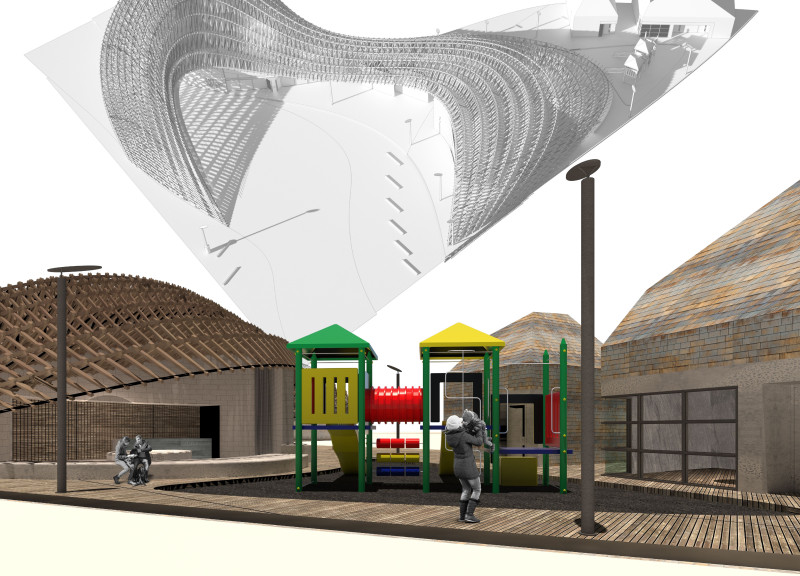5 key facts about this project
The Mane Building Pape Welcome Center acts as a welcoming entry point for visitors, reflecting the area’s rich equestrian culture. Its design is focused on creating an inviting space that encourages community interaction while being mindful of environmental impacts. The layout is functional and user-friendly, ensuring that the needs of various visitors are met in a thoughtful way.
Architectural Layout
The center includes several key areas such as a Main Desk and Lobby, Ticketing area, Storage, Kitchen, Showers and Restrooms, Playground, Lodging, Fire Pit, Camp Grounds, and Parking. This clear organization helps accommodate different activities and allows for easy navigation. Including recreational spaces promotes community engagement, encouraging visitors to spend time in and around the center.
Material Considerations
The facade features recycled lumber, showcasing a commitment to sustainability. This choice ties the building to its natural surroundings and emphasizes the importance of using materials that minimize environmental impact. The use of recycled lumber contributes positively to the overall design, allowing the center to blend with its setting while maintaining a modern look.
Sustainable Features
The facility is designed with practical sustainable features such as a septic tank and solar panels. These elements work together to reduce the center's environmental footprint and support its functions. By integrating these systems into the design, the center illustrates a practical approach to combining sustainability with day-to-day operations.
Distinctive Amenities
There are also recreational features like the Playground and Fire Pit that create opportunities for social interaction among visitors. The arrangement of these spaces is intentional, enhancing the atmosphere and drawing people together. The design incorporates both open areas and structured facilities, improving the overall experience for anyone who visits the center.
The final design detail emphasizes a rhythm in the architecture that resonates with the surrounding landscape, reflecting the connection to equestrian influences while offering a functional space for all who come.


























